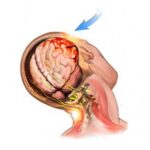The proliferation of the cell phone has caused a new epidemic in America. It is more dangerous and even more deadly than those of the past – distracted driving.
Each day in the U.S. people are injured and killed in motor vehicle accidents that were caused by a distracted driver using or manipulating a cell phone. While cell phone activity is the most common form of distracted driving, studies show that secondary behaviors, defined as any activity not related to the operation of the vehicle, are also increasing at an alarming rate among American drivers. Distracted drivings plays a role in over a million national car crashes and 16% of fatal accidents each year.
Distracted Driving Defined
Any time a driver no longer focuses on driving, takes their hands off the wheel or their eyes off the road, they are considered distracted. Any activity – besides driving – you engage in is a possible distraction and increases the potential of being involved in an accident. Specific examples of distracted behavior include adjusting the radio, using your navigation system, reading (including directions or maps) grooming, talking to others in the vehicle, eating and drinking, use a phone or hands-free device and texting.
The New Universe of Risk
The human brain has a limited capability to perform two thinking (cognitive) tasks at the same time, such as talking on the phone and driving. There really is no such thing as “multi-tasking”. When it comes to cell phone use behind the wheel, any type of use, either holding the phone with one hand or hands-free, significantly increases the risk of a crash. While you may believe you are handling two tasks without issue, your brain is simply switching from one task to the other. When driving becomes the secondary activity, you are paying less attention to the road, as well as the hazards around you.
The Dangers of Distracted Driving
In most cases, the only way to help someone fully understand the impact of distracted driving is to present the facts. Consider the following:
- 16% of all motor vehicle crashes result from distracted drivers and 18% of injury crashes.
- In 2014 there were 3,179 fatalities and 431,000 injuries in car accidents involving a distracted driver.
- 10% of drivers between 15 and 19 years old were distracted when their fatal accident occurred.
- 5 seconds is the approximate amount of time you take your eyes off the road while writing or reading a text. When you are traveling at 55mph, you can cover the entire length of a football field.
Distracted Driving vs. Impaired Driving
According to some studies, distracted driving is just as dangerous as being under the influence of drugs or alcohol. In fact, according to a study done by Car & Driver, it takes a focused, sober drivers 0.54 seconds to brake; an extra four feet is added for drivers with a BAC over 0.08%; an additional 36 feet when reading an email; and an additional 70 feet when the driver is texting.
Fighting the Distracted Driving Epidemic
While most states have enacted some laws against cell phone use and texting behind the wheel, due to the high number of deaths and injuries related to this, the laws don’t appear to be curbing the distracted driving epidemic. One of the primary reasons for this may be the advent of the smart phone which draws driver’s attention from the road with its computer-like functions.
Among traffic safety experts, distracted driving is now considered the nation’s top traffic safety priority. Because of this priority, expect to see a new effort to combat distracted driving through a combination of advances in technology, law enforcement, and safety/educational campaigns.





